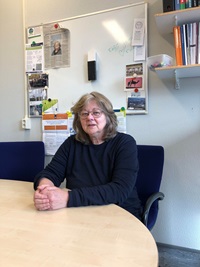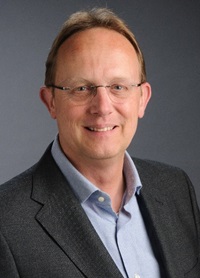10/18/2022:
Together we are stronger and we know more. It is therefore important that various organisations can work together to monitor animal health. Within the Netherlands but also further afield. An extensive network has developed over the years, which continues to grow.
Animal health in the Netherlands
The animal health monitoring system is an initiative by the government and the farming sector. The parties involved all help to shape the manner in which monitoring takes place and are advised by GD. This cooperation between private and public parties is one of the success factors of the monitoring process. The government and branch organisations collaborate, among other things, in the Monitoring Supervisory Committees, where the results of the monitoring are discussed four times per year. A decision can then be taken on whether further action is required, such as conducting extra research, communication to veterinarians or policy adaptation.
The cooperation with other parties also plays an important role, as they can offer supplementary know-how and information, or may have other laboratory techniques at their disposal. Take the case of a (suspected) outbreak of a compulsory reportable or compulsory treatment disease, for example. What if the animal health monitoring system suspects the development of such a disease? In consultation with the Netherlands Food and Consumer Product Safety Authority (NVWA), GD then sends the research material to Wageningen Bioveterinary Research, where laboratory research can take place and a final diagnosis is made. We also exchange knowledge with the Dutch Wildlife Health Centre and the Vector Monitoring Centre.
One Health
There is a close correlation between the health of humans and animals. The Dutch National Institute for Public Health and the Environment (RIVM) is the central player when it comes to monitoring public health. Human and veterinarian health parties collaborate under the principle of ‘One Health’, in order to quickly take measures in case of zoonoses. These are pathogens that can be passed from animals to humans. Priority is always given to protecting the health of humans and animals. GD participates in the national Signalling Forum for Zoonoses, in which there is monthly consultation on findings from both the public health and animal health sectors, by experts from the human and veterinarian sectors.
International cooperation
Animal diseases do not stop at national borders. The changing climate and increasing international trade both result in an increased risk of the spread of animal diseases. GD works at research and exchange of knowledge together with a broad international network of researchers and laboratories. This network is steadily developing both within and outside Europe. Thanks to this exchange, monitoring information can be placed in a broader, international framework, thus improving the chances of early detection of new diseases and greater insight into the best possible response.
It is important to collaborate closely, from detection to combating zoonoses
 Joke van der Giessen: veterinary microbiologist and senior zoonoses researcher, Centre for Zoonoses and Environmental Microbiology RIVM, chair of the Signalling Forum for Zoonoses (SO-Z)
Joke van der Giessen: veterinary microbiologist and senior zoonoses researcher, Centre for Zoonoses and Environmental Microbiology RIVM, chair of the Signalling Forum for Zoonoses (SO-Z)
Joke van der Giessen: “The Centre for Infectious Disease Control of the Dutch National Institute for Public Health and the Environment (RIVM) coordinates the detection, combating and prevention of infectious diseases in the Netherlands, including the zoonoses relevant to human health. These include the compulsory notification diseases, but also non-compulsory notification diseases such as newly emerging infectious diseases. The RIVM is responsible for international notifications to the European Centre for Disease Prevention and Control (ECDC) and the World Health Organization (WHO). When it comes to zoonoses, we work closely with other organisations, as the combating of animal disease is not a task of the RIVM. For farm and companion animals, we collaborate frequently with parties such as GD, the Faculty of Veterinary Medicine, Wageningen Bioveterinary Research (WBVR) and the Netherlands Food and Consumer Product Safety Authority (NVWA). For example, together with the NVWA and Wageningen Food Safety Research (WFSR), we monitor human food pathogens and conduct joint research into the prevalence of zoonotic pathogens in farm animals. Each year, a different sector is researched. The NVWA reports this data to the European Food Safety Authority (EFSA). We conduct our own research of animal reservoirs for infections derived from wildlife, such as Lyme and hantavirus for example, though we also collaborate with other partners.
Zoonoses structure brings experts together
As part of the zoonoses structure and in the light of the ‘One Health’ principle, the human and veterinary sectors meet monthly in the Signalling Forum for Zoonoses (SO-Z). This includes experts from the various GD sectors, but also experts from WBVR, the Dutch Wildlife Health Centre (DWHC), the Faculty of Veterinary Medicine and the NVWA, including the Vector Monitoring Centre (CMV). There we discuss the signals received from animal health monitoring, among other aspects. Any relevant signals are reported monthly. In the event of an urgent signal, it can be transferred to the following stage of the zoonoses structure. Not so long ago for example, zoonoses experts met to discuss avian influenza.
Understanding each other’s language
The SO-Z recently discovered that there is no monitoring for swine influenza. We considered that to be a hiatus, as swine may be an important source of strains of influenza relevant to humans. Also in the field of Chlamydia psittaci, we have conducted joint research in a One Health setting in order to reduce the disease burden. In each form of collaboration, it is extremely important that you know each other, develop a good relationship, understand each other’s language and can trust each other. It is also essential to reach good agreements on how to respond to signals and how to share them in a safe manner. That is equally important for the farmers in question.
Challenge for the future
The COVID-19 pandemic has shown what an enormous impact a zoonosis can have on society. The challenge is of course: how do we prevent such a pandemic in the future? In the Netherlands, many people and animals cohabit in a small space, which makes effective infrastructure and good collaboration between the domains extremely important. Food production and animal husbandry are top notch in this country. The challenge lies in rendering this more sustainable in a way that animal health, public health and animal welfare remain guaranteed, and farmers can still earn a decent living.”
In case of an outbreak, we can react very quickly
 Marcel Spierenburg: coordinating veterinary inspector at the NVWA Incident and Crisis Centre (NVIC), legal adviser and KNMvD recognised specialist in veterinary public health
Marcel Spierenburg: coordinating veterinary inspector at the NVWA Incident and Crisis Centre (NVIC), legal adviser and KNMvD recognised specialist in veterinary public health
Marcel Spierenburg: “Despite all the great efforts, diseases such as avian influenza (AI) cannot always be kept out. AI is widespread among wild water birds in Europe, and does not stop at the national borders. Furthermore, we are detecting a different serotype of AI almost every year, introduced by birds migrating from Asia. From autumn 2021 onwards, we have been dealing with an extremely virulent variant (HPAI H5N1), which causes outbreaks at all kinds of poultry farms, despite all measures taken. The NVWA, and specifically the Incident and Crisis Centre (NVIC) is responsible for timely detection of diseases and suspicion of animal diseases that based on European legislation, may be compulsory notification or even compulsory treatment diseases. The NVIC team coordinates the processing of suspicious cases and combating of animal diseases and zoonoses from the NVWA headquarters in Utrecht.
The initial notification is generally made by the farmer or their veterinarian. AI can present with various clinical signs, depending on the type of poultry. Many suspicious cases are reported as result of increased losses. Upon necropsy, pinpoint haemorrhaging in the heart and the proventriculus are signs of AI. We collect all the information and are in contact with the farmer, veterinarians and GD. If we believe that the case reported is suspicious, an NVWA veterinarian will visit the farm. When AI is suspected, we always send a team that includes the farmer’s veterinarian and a GD veterinarian. If the team suspects AI at a poultry farm, they take twenty throat swabs and twenty cloaca swabs, and immediately lock down the farm. The samples are sent directly with our own courier to the national reference laboratory in Lelystad, at WBVR, where PCR tests are carried out. The results are available within 6 to 8 hours, and initially sent to the NVWA. That can be any time day or night. We then immediately inform the farmer and veterinarians. In the event of an outbreak, we also inform the Minister of Agriculture, Nature and Food Quality, and we immediately initiate the culling process. We also call the local government, the RIVM and the Area Health Authority (GGD).
The quicker it is detected, the better.
There is an effective structure in place in the Netherlands, from monitoring to control. We have known each other for many years, and it is a well-oiled machine, which is why we can react quickly, reducing the length of time a farm is in lockdown. We collaborate effectively, and GD can make excellent analyses on the risks of outbreaks, based on the monitoring data. There are also plenty of options in terms of diagnostics. We exchange a great deal of knowledge and signals in the various sectoral health meetings. The quicker diseases are detected, the better.
The NVWA reports the monitoring results to the World Organization for Animal Health (OIE) and the European Food Safety Authority (EFSA). Reporting is compulsory. The OIE publishes the monitoring data globally. The OIE rules and codes must be followed to the letter in order to facilitate international trade. In the event of an outbreak in the Netherlands, other countries generally close their borders to Dutch animals and animal products. It is therefore of great economic importance that the monitoring in the Netherlands is organised and communicated well. The Netherlands can only retain its disease-free status if the right tests are carried out according to the appropriate rules. Via the ‘Animal Disease Information System (ADIS)’, we also have an international hotline as it were, with the 28 member states of the European Union that adhere to compulsory notification. When there is a notification somewhere in Europe, we have immediate insight into whether live animals have been imported from that country over the past six weeks, including their current location. We can then test animals at the farms in question, sometimes in cooperation with GD.”